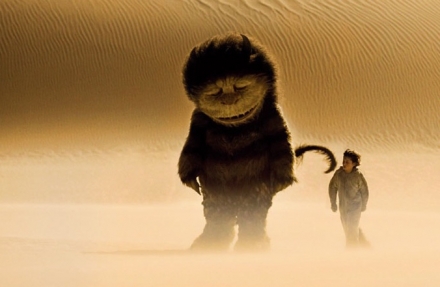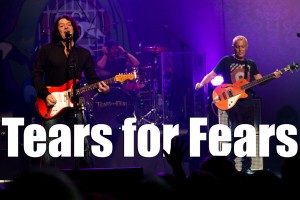Where the Wild Things Are
4 min read
I’ll open with a disclaimer: Spike Jonze’s Where the Wild Things Are has finally arrived after months of hype, which means reactionaries will have plenty to say, engaging in both negative and positive hyperbole ranging from “Boring as Hell” to “Groundbreaking Masterpiece.” It’s inevitable. The truth is, Where the Wild Things Are is neither a bad film nor a masterpiece, it is just…very good. It isn’t the best movie of the year and it isn’t Jonze’s best; however, it is possibly one of the most interesting works I’ve seen so far this year.
If you were ever a child, you’re at least vaguely aware of the plot of Where the Wild Things Are, (the original book by Maurice Sendak) which is of course [necessarily] expounded upon by writers Dave Eggers and Jonze. Here goes a bare-bones rundown: A typically rambunctious boy named Max (played wonderfully by Max Records, who is now 12 years old) angrily and selfishly lashes out (“I’ll eat you up!”) at his exasperated mother (Catherine Keener) then runs away from home, journeying to an island inhabited by the Wild Things, which are very large monsters, who come to call Max their king. It would be a futile exercise to describe the plot further, because frankly there isn’t much to it. It might as well have been the chronicle of a child’s day off of school for snow. The events that take place are not important in-and-of themselves, but rather what they feel like, what they mean. Jonze has crafted a lean film. He’s given himself room to move, because what Where the Wild Things Are lacks in plot, it makes up for in psychological depth.
It’s no mystery that Jonze and his cohorts (I’m thinking Kaufman and Gondry) specialize in translating Freudian notions of the mind into film. They create physical environments that serve as microcosms of the mind, as a means of exploring psychological realities in a literalistic, visual way. No doubt there is plenty of this at work in Where the Wild Things Are, as the Wild Things are clearly refracted projections of Max’s Id. The island functions as a kind of interior architecture of the mind and Max’s interactions with the Wild Things are the primal working out of the trauma of growing up. There is a reason this story is called “Where the Wild Things Are,” and not “Where the Cute Things Are.” Make no mistake; this film is no less Freudian than Jonze’s previous work.
So far, I’ve made this sound like a complicated, dense affair. It really isn’t. The cerebral elements I’ve mentioned are there, but Jonze sits them in the backseat this time around. Instead, he chooses to let his film breathe so that the raw, primal urge of Max’s hodgepodge of childhood emotions can stand in full view. This is a film about the inner life of a young boy – the adventurous spirit, the joyous imagination, the suspicion of other’s motivations, the wounded ego, and the love of home and mother. These feelings rattled around inside of Max, just as the Wild Things shuffle about the island just…doing things.
Now, how about those creatures? The Wild Things themselves are very impressively designed and I simply loved them! Wonderfully translated from the page, they are diverse and odd. The blend of costumes and puppetry (courtesy of Jim Henson’s Creature Shop) with digitally rendered faces is beyond perfect. The result is that kind of majestic, strangely present quality (with a hint of creepy otherness) that has not yet been captured by CGI and can only come from tangible effects – think Dark Crystal, Never Ending Story and much of Guillermo del Toro’s work. Jonze chose to record the voices with all of the actors together instead of separately, which turned out to be absolutely the right choice. There is a spontaneity and a truthfulness about the performances as a result. James Gandolfini rightly deserves the praise he’s receiving for his work as the voice of the primary Wild Thing, Carol, who is a scary but vulnerable emotional wreck that experiences the same kind of unnamed, generalized anxiety that Max feels. He’s afraid of everything falling apart, even if he doesn’t know what that “everything” is. The rest of the Wild Things are solidly cast as well. Judith is the volatile complainer (Catherine O’Hara); Ira, her partner, is a gentle and patient soul (Forest Whitaker); Douglas is loyal and hilariously measured in his speech (Chris Cooper); KW is the restless love interest of Carol (Lauren Ambrose), and Alexander is short, needy, and has worrisome eyes (Paul Dano). The effects are wonderful and you simply cannot take your eyes off of them when they are on the screen.
It should be noted that this film is a mixed bag, content-wise, for kids. There are, in fact, hilarious moments and plenty for kids to love. But much of it is brooding, serious, depressing, or downright scary. Like E.T. or Labyrinth, whether or not a child can handle this material depends entirely on the child. E.T. scared the hell out of me as a kid, but something about it resonated at a young age, even if I wouldn’t understand it until I was older. This is not a kid’s film though, but rather a perceptive film by an adult about childhood that functions according to a child’s logic. Sitting in the theater watching this movie, I heard children all around me engaging the film. They were sniffling, asking their parents questions, laughing, and sympathizing with characters when their feelings were hurt. I honestly think kids will get this film even if they don’t realize it consciously, because it appeals the primal nature – the desire to feel safe and needed – in all of us, young and old.






